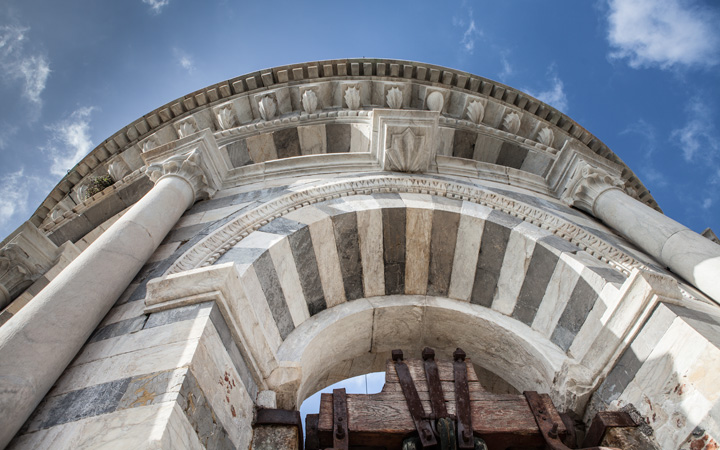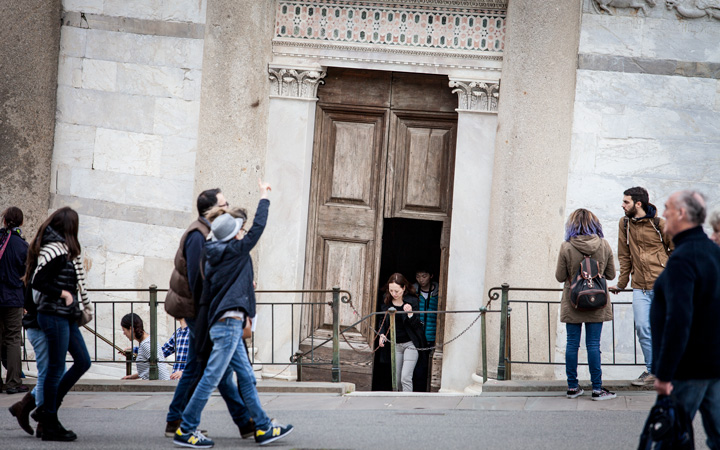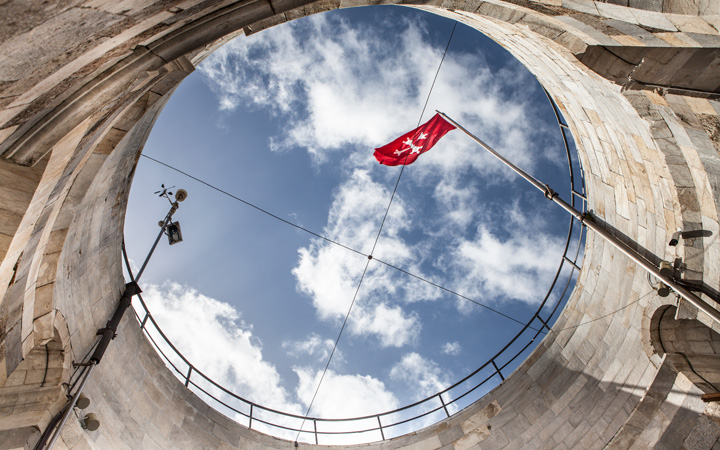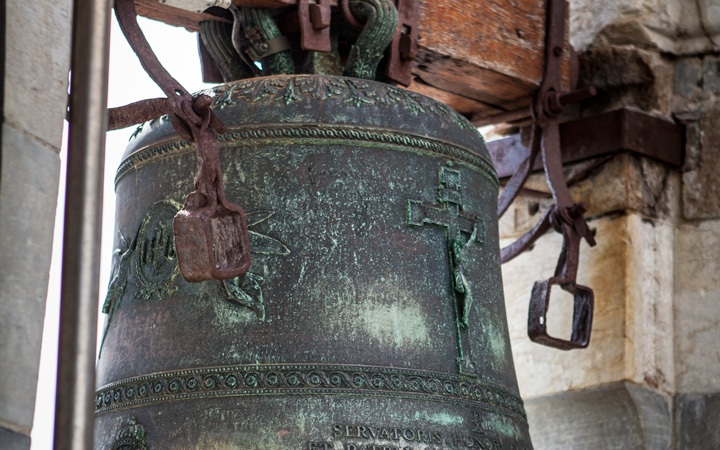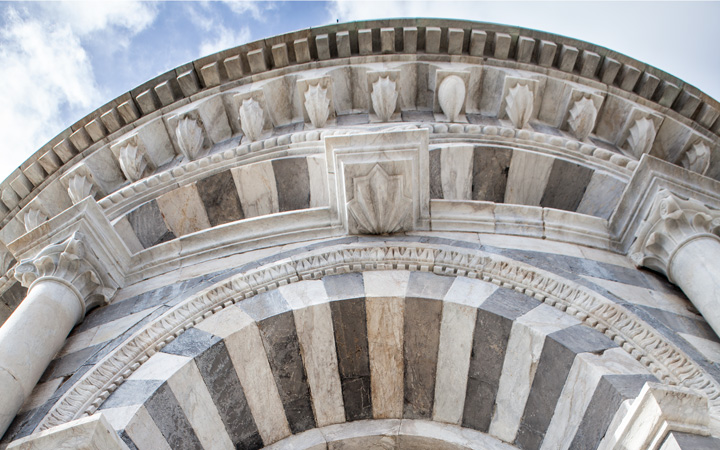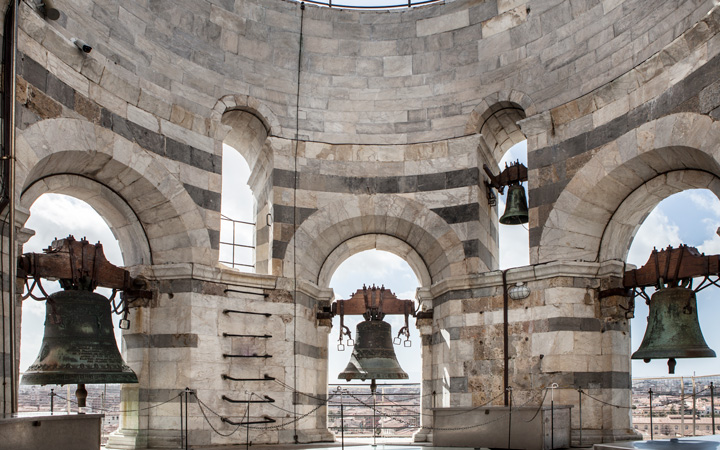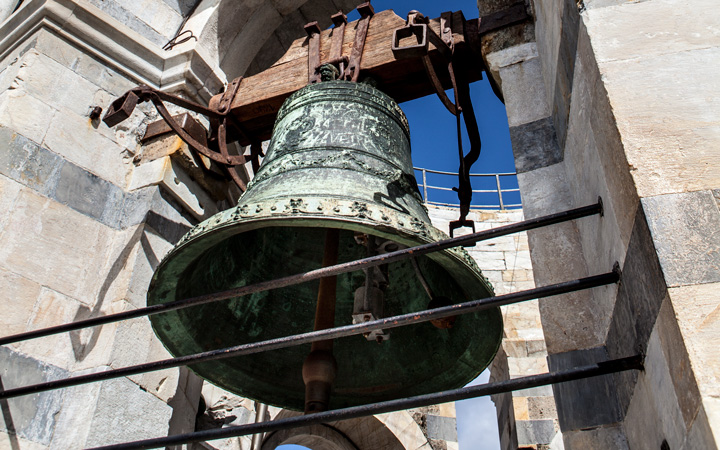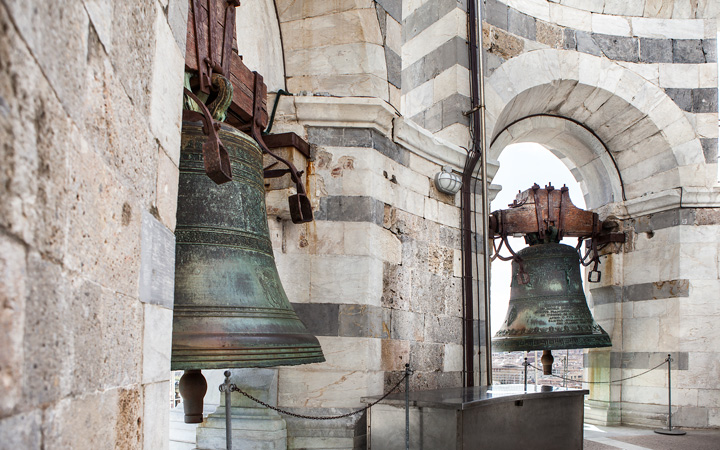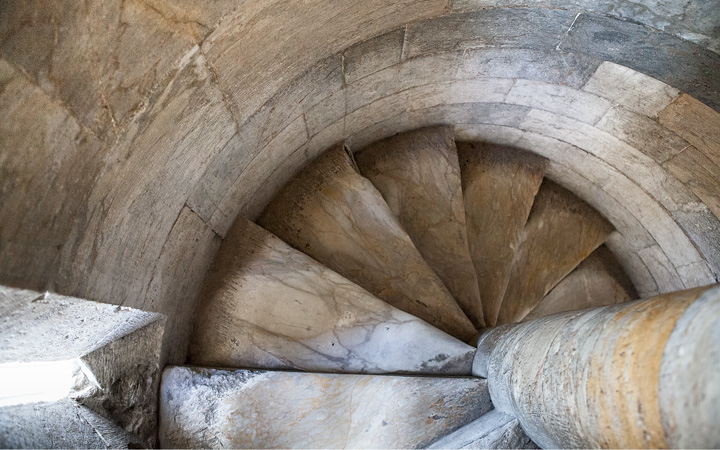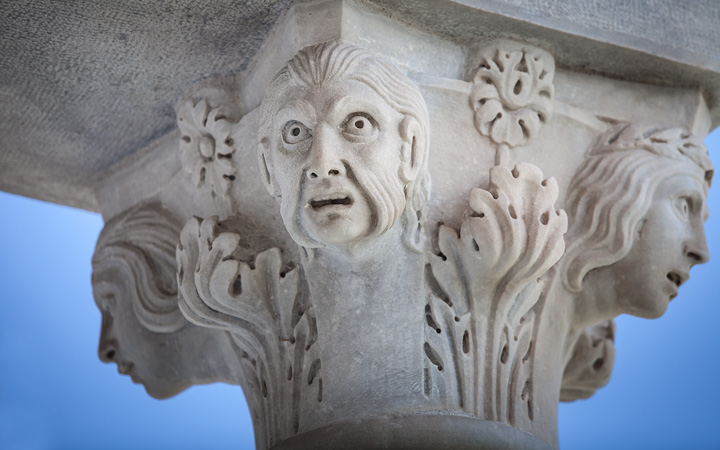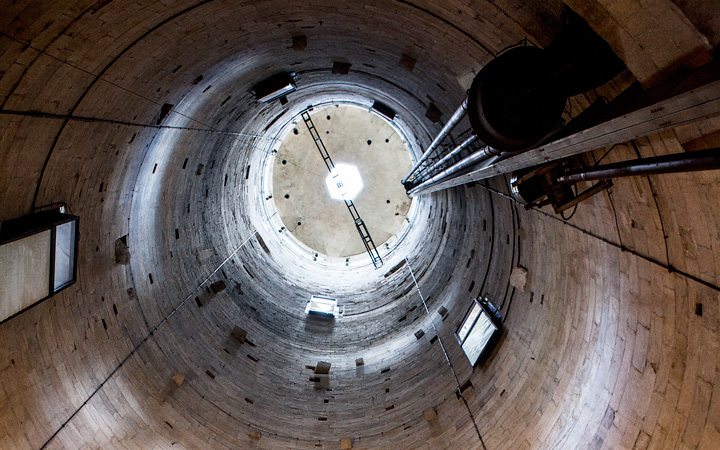Tower
[…] for this Guglielmo, it is said, in the year 1174, together with the sculptor Bonanno, laid the foundations of the belfry of the cathedral in Pisa. These two architects had little knowledge of foundations in Pisa and […] before they reached the building halfway, it inclined to one side, so that said belfry leans six and a half armslenghts from its vertical […].
This is how Giorgio Vasari in his mid-sixteenth-century Le Vite de’ più eccellenti pittori, scultori, e architetti explained the causes of the “obscure evil” which struck the Tower shortly after work started.
But what is its real purpose?
It is called the Leaning Tower or the Tower of Pisa but actually it was never used for defending the city; it is part of the religious complex in the Duomo Square and acts as its bell tower. It played an active role in both human and divine timekeeping with its seven bells – one for each musical note – the largest of which, cast in 1655, weighs a full three and a half tonnes! It is known throughout the world for the beauty of its architecture, for its extraordinary tilt, which makes it an authentic miracle of statics, and for the fact that it stands in the universally renowned Piazza dei Miracoli, of which it is certainly the prize jewel. And this is why it is one of the 7 Wonders of the World.
How does the Tower measure up?
Height: 58,36 metres
External diameter: 15 metres
Weight: 14.453 tonnes
Inclination: (current) about 5.115°
Hewn stones: 29.424
Stone surfaces: 7.735 square metres
Capitals: 207
Staircase: 273 steps

